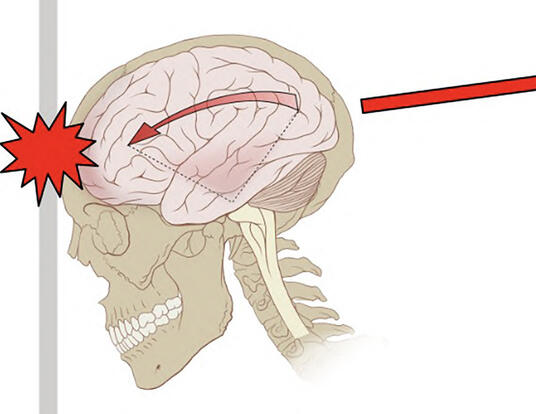Harvard Horizons Podcast: Are Neutrinos the Key to the Universe?

Research at Risk: Since World War II, universities have worked with the federal government to create an innovation ecosystem that has yielded life-changing progress. Now much of that work may be halted as funding is withdrawn. Find out more about the threats to medical, engineering, and scientific research, as well as how Harvard is fighting to preserve this work—and the University's core values.
At a conference in 1932, the Nobel Prize-winning nuclear physicist, Enrico Fermi, became the first scientist to use the term “neutrino” publicly. Since then, scientists have experimentally confirmed Fermi's theories and directly observed neutrinos, but the subatomic particles are still not fully understood. In this episode of the Harvard Horizons podcast, PhD student Nicolò Foppiani asks whether the "sterile neutrino" exists and whether it could explain one of the greatest mysteries in astrophysics: the source of dark matter.
This transcript has been edited for correctness.
What can you see in this picture? Someone? You might think it's abstract painting. Someone might recognize a picture from a video game. But what it is, it's physics data. It's the type of data I analyze in my research every day. I welcome you to step into some of the work I do as a particle physicist in my quest to discover new particles and understanding more of our universe.
The blue color in the background of this picture represents our detector full of atoms. A neutrino, a subatomic particle that is almost invisible, enters the detector from the left and suddenly collides against an atom. As a result of the collision, two new particles are created, and their traces are captured by our detector in what looks like a photograph.
Neutrinos, aside for this very rare collision, are invisible to light, are invisible to us. And this is why this word might be unfamiliar to many of you. Neutrinos-- invisible, but everywhere. When marveling at this beautiful picture of the night sky, we cannot see all the neutrinos that are surrounded these galaxies. We are immersed in a sea of neutrinos.
Think that right now in this box there are about 10,000 neutrinos. And together, with deciphering the message that Vanessa left you, I'll leave you as a homework to compute how many neutrinos are with us tonight in Sanders Theatre, you'll be impressed. And if you're curious about what neutrinos come from, where there are so many processes that produce neutrinos, but you don't need to go very far. The nuclear reactions happening inside the core of the sun produce so many neutrinos that every second, each of us is crossed by about 10 billion neutrinos coming from the sun.
Neutrinos are not all the same. We currently know about three different types called electron, muon, and tau. And don't worry about these words. I'm going to refer to them by these colors for simplicity. But also, if you are puzzled by these symbols, as with many other elementary particles, we refer to them with Greek letters.
The difference between the neutrinos is in the particle that are created during their collision with atoms. For example, in the case of electron neutrinos, electrons are created from their interactions. And this was also the case of the first picture I showed you today at the beginning of the presentation. Muons and taus are just two of your cousins of the electron, and this is how we can distinguish the different neutrinos.
But this might not be the end of the story. There might be a new type of neutrino. It would be called sterile neutrino because do not collide at all. You have no associated particle. You would be entirely invisible to us. And the goal of my research is to find it.
But how do you go ahead and find an invisible particle? Well, we need to use another interesting property of neutrinos. They change type. So let's zoom out and imagine an experiment to help you understand what I mean. At the Fermi National Laboratory, close to Chicago, Illinois, they have a artificial beam of neutrino. Let's imagine to point it towards us here in Cambridge about 1,400 kilometers away.
The beam is engineered so that it contains only the yellow type. But as neutrinos travel towards us, they change type, following what it looks like a wavelike pattern. That means that if you were to detect the neutrino beam at the very beginning, you would only measure the yellow type. Then further down the line, most of the neutrinos would turn green, and one out of 10 would turn red, and the pattern would repeat in a cyclic way.
This phenomenon is called neutrino oscillation. It can depend on many different factors and it can produce many different patterns. But what I want you to take away now is that this transformation happens in a cyclic way and over hundreds of kilometers for this neutrino beam. So how does this help us find the sterile neutrino? Well, if neutrinos can transform into each other, then perhaps they can also transform into the sterile neutrino. And this is how we might be able to detect its presence.
The difference is that this time, instead of inducing a transformation over hundreds of kilometers, the transformation will happen over hundreds of meters. And this is why we need to zoom into the lab. And despite might only see some vegetation, buildings, and roads, underground, a complex set of accelerators channels particles and produces beams of neutrinos which are then measured about 500 meters away by our detector.
Because we are looking at such a short distance, neutrinos would stay yellow from production to detection. But if we see a red signal that should not be there, well, we need an explanation. The explanation would be the presence of the sterile neutrino. The yellow would turn into blue, the sterile, and then into red, hence, detecting the red would make-- prove the existence of the sterile neutrino.
What will be different this time is that instead of once every 10, will be one in 1,000, making the task quite more ambitious. But the images captured by our detector allow us to distinguish the two species. In this example, we can match this showery profile to the profile of an electron while the straighter one to the profile of a muon. And detecting electrons and muons allow it to tell the species of the incoming neutrinos.
But remember, this is only once in 1,000, and for this reason, we need to collect and analyze hundreds of thousands of these pictures. And this is what I do in my research. I analyze complex and large data sets where these images are converted into numbers and I write complex algorithms to try to classify the two species and find evidence of the sterile neutrino.
But why am I doing all of this?
Why am I even embarking on this complex task? If you think that results are still inconclusive, well, the payoff could be enormous. If discovered, the sterile neutrino would mean so much more to physics than simply discovering a new particle. It can make us progress significantly into answering some of the most fundamental open questions in physics.
All the matter we see, from us in Sanders Theatre, to the solar system, to the galaxy, to all the neutrinos around us, it's only 20% of the total matter in the universe. The rest is in the invisible form that we call dark matter because we don't know what it is made of. Perhaps the sterile neutrino could be our link, our connection between our world and the realm of dark matter.
And this is only one of the many open questions that the sterile neutrino could help us answer. And I'm sure the journey towards its discovery will be full of surprises we can't even imagine.
Get the Latest Updates
Join Our Newsletter
Subscribe to Colloquy Podcast
Simplecast





